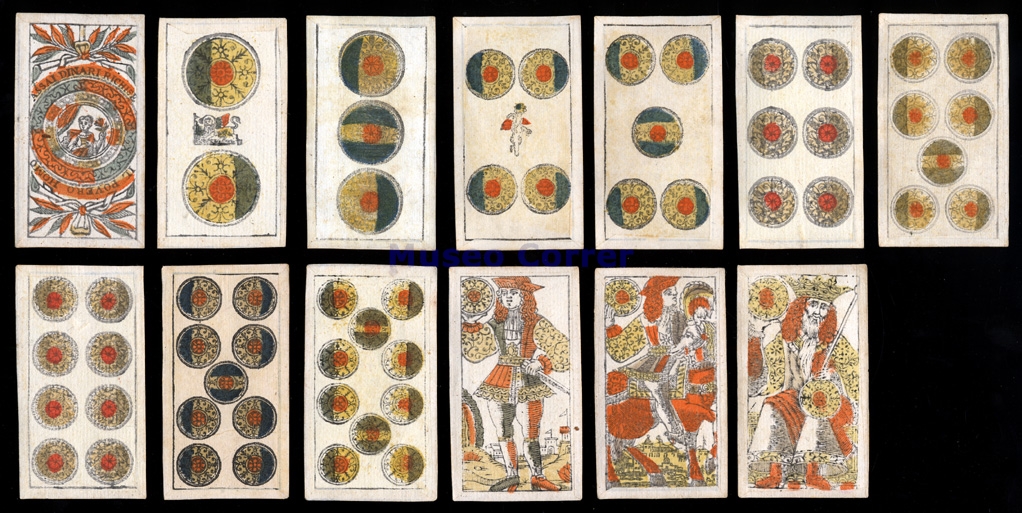Thank you for joining us as we celebrate our first year. We had a lot of fun writing A Suitable Match and we hope you enjoyed reading it.
The winner of our fabulous prize package is…
Anne Payne
Congratulations, Anne! We’ll be sending you an email to get your mailing address. We hope you enjoy all your goodies!
Did your favorite man lose the poll? Don’t despair. For those of you who loved Twiford and Ross, we wanted to let you know what happened to them.
London, England
July 1818
Twiford smiled as he read the letter from his good friend, Chard. It was short, a mere four lines scrawled across the paper to say that Chard had caught up with Cressida at the George and Pelican and they were getting married.
It had nearly killed Chard to wait until after the deadline to pursue Cressida. After burying his uncle, he’d shown up on Twiford’s doorstep, begging his old friend to keep him away from his love until the money was no longer an issue. It had been no easy request. Twiford nearly had to lock Chard in a room to keep him here, but the renewal of their old friendship had been worth two days of playing jailer.
As he refolded the note, running his fingers along the edges to sharpen the creases, Twiford examined his heart for the pain he had though this news would bring.
Much to his relief, there was none. He was truly free of the specter that was his affection for Cressida Blackstone.
When had it faded? Three months ago, pleading his case in a rocking chaise on the road to London, he vowed his love was a bright, burning fire that had withstood three years absence and the devastation of a close friend. Could love that strong die so quickly? Or had he been in error that he loved her at all?
He tossed the letter on the desk and strode from the room. Before the letter arrived, he’d asked to have his curricle readied and brought round. It should be out front by now.
As he shrugged into his greatcoat and donned his hat, it occurred to him that the situation was not as cut and dried as he was trying to make it. His love had been very real, but over the last three months he had gotten to know Cressida – the real Cressida – and discovered that the woman he loved, or thought he loved, wasn’t real. She had changed as much as he had with the passing of years. Over time he’d built her up, given her characteristics and ideologies that weren’t truly a part of her.
The real Cressida was a fine woman and he was glad to consider her a friend. But he didn’t love her. Though he had felt crushed when she rejected him three months earlier, he now felt freed by her honesty and strength. He was glad to know her, but glad not to be bound to her.
The sun glinted off the trim on his curricle as the jangle of harness filled his ears. He settled into the seat with anticipation swirling in his belly. Part of him had wondered, worried, that he still held feelings for Cressida. When Chard’s letter brought nothing but happiness, Twiford knew his heart was free.
He snapped the reins to send his curricle rolling down the street. Now that he knew without a doubt his heart was entirely his own, he knew exactly who he wanted to give it away to.
An overturned flower wagon caused him to pull to a stop. The mess was nearly cleaned up, so he decided to wait. Casting his eyes heavenward, he marveled at how life at come together in a few short months. “Thank you, Lord, for having a better plan than my own.”
The flower seller bemoaned the loss of his merchandise, drawing Twiford’s attention to the last of the flowers strewn across the road. He could probably buy the entire wagonload for a mere pittance. They may be too bruised and broken to sell as bouquets, but they would be quite lovely carpeting the front steps of a London townhome. Calling to the seller, he decided to put his fledgling idea into motion.
There was a young lady a few streets over that loved flowers, sunshine, and curricle rides. As Twiford moved on, a now beaming flower seller following, he prayed the young lady also loved him.
***
Ross Ainsworth walked into the solicitor’s office, unsure of what the man would tell him. He wasn’t even sure what he wanted to hear. Had Cressy managed to get married? He’d been by Lady Dove’s house a few days ago and nearly tripped over all the gentlemen vying for her attention. Maybe she’d married one out of desperation. Or maybe she’d traded in on her friendship with Twiford and decided to marry him after all. She certainly hadn’t come knocking on his door.
He wouldn’t blame her either way. Ross knew what it was to be destitute. To wonder where the next meal would come from, if he’d be able to afford shelter for the next week, let alone the next month. Lack of money made people do much stupider things than marry someone they didn’t love. He ran a finger along his scar. Sometimes it made you ruin your life.
Whatever news the solicitor had, it wouldn’t affect Ross overmuch. He and Cressy were family. Marriage wouldn’t change that. The money would be nice, the property even nicer, but he was well enough off now to not be in dire need of either.
“Thank you for coming, Mr. Ainsworth. It appears that Miss Blackstone did not meet the requirements of the will. The jewels, property, and money now belong to you.”
Ross shook his head and smiled. Well done, Cressy. He’d prayed she would hold out for love. One thing Ross had learned when he abandoned family and country was that life without love was dismal. The road back and been long and hard, and he was no longer the carefree youth that had thumbed his nose at his grandmother’s concerns. He wished she had been able to see the man he had become.
Business at the solicitor wrapped up quickly and he left a richer man than he’d walked in. What was he going to do now? The truth was he could do anything. He had property and money. He could be a gentleman of leisure. Maybe toss his lot in with the other third tier bachelors in London and try to find himself a wife. With no title and a questionable past he wasn’t as desirable a catch as Twiford or Chard, but he had money and good looks. For some, that would be enough.
But the Season was winding down and the balls and routs held little appeal. He’d suffered the social scene for three months to be near Cressida in case she had a change of heart. He’d been hurt when she didn’t choose him, but God knew what was best. After visiting a few young ladies in Town, he knew that he would be finding his wife elsewhere.
The fact was he was tired of London. He returned to his rooms and began packing. There was somewhere for him to go now. A place he could call home. Being a country gentleman seemed a nice change of pace.
He made the trip in two days, hearing about Chard’s dramatic proposal to Cressida when he stopped to spend the night at The George and Pelican. Settling in was easier than he anticipated, the familiarity of childhood returning to make him feel at home.
Several neighboring gentlemen called to acquaint themselves with the new owner. Some he’d known as a child, but most were new to him. The quieter life away from London suited him immensely. He’d seen too much of the world to be satisfied with the glossy facade of the capitol, though nearby Bath wasn’t much better. The small area where he now lived, though, seemed real, honest. It was a place a man could raise a family to love the Lord and country.
He was walking down the street a few days after returning home, not really looking where he was going, thinking about what God might have in store for him now. His musings were cut short as he accidentally bumped into a group of women leaving the milliner’s shop.
“I beg your pardon!” Ross stooped to collect the fallen packages. When he stood again, he found himself looking into the bluest eyes he’d ever seen. They were framed by twin sets of golden ringlets and sprinkling of freckles. There was a seriousness in her eyes that was at odds with the impish smile on her lips.
For the first time in a long while, Ross wanted to buck the strictures of polite society. He wanted to meet this girl, find out how someone could be happy and sad at the same time. But they hadn’t been introduced, and he knew none of the other women in the party.
“Mother,” the girl called, while still looking Ross in the eye. “Are my new gloves damaged? I want to wear them to the dance at the Assembly Rooms tonight.”
Ross raised his eyebrows and fought to keep the grin from his lips.
The young woman’s lips twitched, as if she too were fighting to urge to grin. “Perhaps that young gentleman Father met will be there. A Mr. Ainsworth I believe he said.” She tilted her head in inquiry.
Ross nodded slightly and gave way to the smile he’d been holding back.
The young woman’s mother huffed over and linked arms with her daughter. “You would know more about your gloves than I do, considering the package is in your own hands.” She cast a dark glance a Ross, before shaking her head and giving him a small smile. “And I daresay your father, who went to visit that young man this morning, will be happy to introduce you should he show up at the Assembly Rooms just around the corner with the white brick front.”
Ross nodded at the mother. He watched them walk away before turning and making his own way home, a bit more spring in his step. Yes, indeed, he thought he would like living life in the country.
Thanks for joining us. Did you enjoy A Suitable Match? We’d love to hear your thoughts and invite you to stick around as we go back to our regular blog schedule with history, book highlights, and more fun discussions. Leave us a comment letting us know what you’d like to see this year on Regency Reflections.
Originally posted 2013-02-27 10:00:00.




















 There are many other opportunities to embarrass yourself at a wedding (and given the propensity of brides to hire photographers and videographers, these moments are captured for posterity). Even if you are only a guest, you aren’t immune to being caught up in the wedding disaster hall of fame. Dance floor escapades, bouquet toss brawls, and unplanned toasts are all fodder for the awkward situation generator.
There are many other opportunities to embarrass yourself at a wedding (and given the propensity of brides to hire photographers and videographers, these moments are captured for posterity). Even if you are only a guest, you aren’t immune to being caught up in the wedding disaster hall of fame. Dance floor escapades, bouquet toss brawls, and unplanned toasts are all fodder for the awkward situation generator.
 anniversary dolls
anniversary dolls



